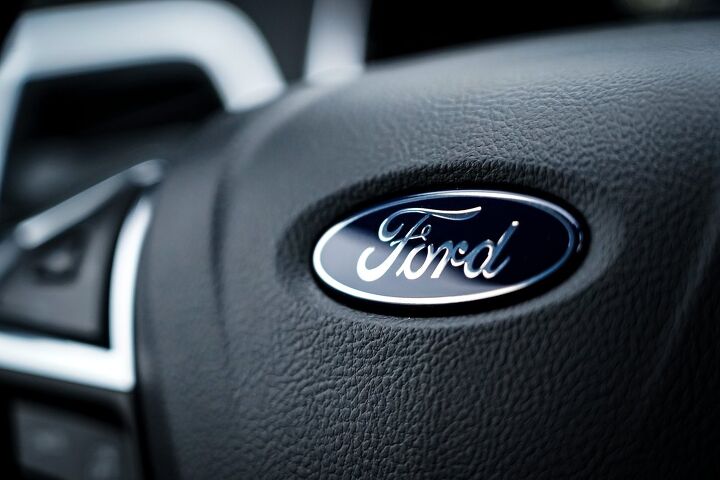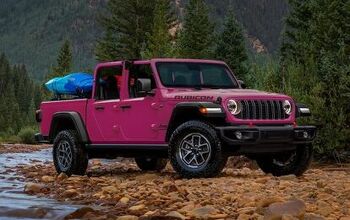Ford to Pull Back On Future Chinese Investments

Ford will be scaling down future investments in China, as the company’s chief executive has suggested that there will be “no guarantee” Western automakers can compete with local electric-vehicle rivals. This should have been obvious to American manufacturers who have historically been required to engage in partnerships with Chinese corporations just to sell within the region. But it also speaks to hardships Ford has endured while trying to break into the market.
The Blue Oval had already hinted that its strategy in Asia would be changing, especially in regard to China. But there will still be a lot of holdover business, regardless of how much it wants to scale back investments. The company has joint-venture partnerships with Jiangling Motors Group, Changan, and Lin Ho, and shares eight factories between them.
It also recently announced the next-generation Lincoln Nautilus for North America would be exported from China, a first for Lincoln. Despite the promised decline in future investment, the company seems interested in making the Lincoln brand a popular luxury marquee, similar to what General Motors managed to do with Buick.
However, Chinese EVs are fairly dominant in Central Asia and Ford seems to believe trying to compete with domestic brands and burgeoning EV firms will be exceedingly difficult.
“If you just reinvest in a new cycle of EVs in China, there is no guarantee, or no data, that would suggest the western companies win,” CEO Jim Farley told the Financial Times in an interview.
“The winners in China [in EVs] turn out not to be the [traditional carmakers],” he continued. “It’s actually all the EV brands like BYD and Tesla, Great Wall, SAIC, and Changan, who are winning.”
This also ties into an earlier announcement made by Blue Oval that suggested it would begin focusing on commercial vehicles while paying attention to what other manufacturers are doing in terms of battery technology — to see what works in China before diving back into electrified passenger vehicles.
From FT:
Global carmakers have been losing ground to domestic rivals that offer cheaper or better electric vehicles, threatening profits in the market that has become a core business for manufacturers such as Volkswagen, Mercedes-Benz or General Motors.
Several carmakers such as VW have vowed to boost spending in the country to try to claw back market share, but Ford plans to take a different approach, Farley said.
“We have been for the last couple of years, really looking carefully at our China business,” Farley said. “And now we have made up our mind where our strategy is going to be, and it will be a much lower investment, more focused investment.”
He declined to comment on local reports on Monday that Ford was preparing to cut 1,300 jobs in the country.
Ford seems laser-focused on margins right now. It has already culled smaller vehicles from the home market because they were less profitable than large SUVs and pickup trucks and has been doing the same in Europe — seeking a leaner, more competitive cost structure with fewer employees.
There are two ways to look at this. Ford could be viewed as playing things smart during a time of economic uncertainty, noting that trade tensions between the United States and China continue to cause problems for the business on both sides of the Pacific. But it could also be seen as a company running scared and trying to rebound from a lackluster 2022 by cutting costs wherever possible. Still, even the less-flattering assessment might be the correct play to make.
[Image: Nick Shoe/Shutterstock]
Become a TTAC insider. Get the latest news, features, TTAC takes, and everything else that gets to the truth about cars first by subscribing to our newsletter.

A staunch consumer advocate tracking industry trends and regulation. Before joining TTAC, Matt spent a decade working for marketing and research firms based in NYC. Clients included several of the world’s largest automakers, global tire brands, and aftermarket part suppliers. Dissatisfied with the corporate world and resentful of having to wear suits everyday, he pivoted to writing about cars. Since then, that man has become an ardent supporter of the right-to-repair movement, been interviewed on the auto industry by national radio broadcasts, driven more rental cars than anyone ever should, participated in amateur rallying events, and received the requisite minimum training as sanctioned by the SCCA. Handy with a wrench, Matt grew up surrounded by Detroit auto workers and managed to get a pizza delivery job before he was legally eligible. He later found himself driving box trucks through Manhattan, guaranteeing future sympathy for actual truckers. He continues to conduct research pertaining to the automotive sector as an independent contractor and has since moved back to his native Michigan, closer to where the cars are born. A contrarian, Matt claims to prefer understeer — stating that front and all-wheel drive vehicles cater best to his driving style.
More by Matt Posky
Latest Car Reviews
Read moreLatest Product Reviews
Read moreRecent Comments
- Tassos Obsolete relic is NOT a used car.It might have attracted some buyers in ITS DAY, 1985, 40 years ago, but NOT today, unless you are a damned fool.
- Stan Reither Jr. Part throttle efficiency was mentioned earlier in a postThis type of reciprocating engine opens the door to achieve(slightly) variable stroke which would provide variable mechanical compression ratio adjustments for high vacuum (light load) or boost(power) conditions IMO
- Joe65688619 Keep in mind some of these suppliers are not just supplying parts, but assembled components (easy example is transmissions). But there are far more, and the more they are electronically connected and integrated with rest of the platform the more complex to design, engineer, and manufacture. Most contract manufacturers don't make a lot of money in the design and engineering space because their customers to that. Commodity components can be sourced anywhere, but there are only a handful of contract manufacturers (usually diversified companies that build all kinds of stuff for other brands) can engineer and build the more complex components, especially with electronics. Every single new car I've purchased in the last few years has had some sort of electronic component issue: Infinti (battery drain caused by software bug and poorly grounded wires), Acura (radio hiss, pops, burps, dash and infotainment screens occasionally throw errors and the ignition must be killed to reboot them, voice nav, whether using the car's system or CarPlay can't seem to make up its mind as to which speakers to use and how loud, even using the same app on the same trip - I almost jumped in my seat once), GMC drivetrain EMF causing a whine in the speakers that even when "off" that phased with engine RPM), Nissan (didn't have issues until 120K miles, but occassionally blew fuses for interior components - likely not a manufacturing defect other than a short developed somewhere, but on a high-mileage car that was mechanically sound was too expensive to fix (a lot of trial and error and tracing connections = labor costs). What I suspect will happen is that only the largest commodity suppliers that can really leverage their supply chain will remain, and for the more complex components (think bumper assemblies or the electronics for them supporting all kinds of sensors) will likley consolidate to a handful of manufacturers who may eventually specialize in what they produce. This is part of the reason why seemingly minor crashes cost so much - an auto brand does nst have the parts on hand to replace an integrated sensor , nor the expertice as they never built them, but bought them). And their suppliers, in attempt to cut costs, build them in way that is cheap to manufacture (not necessarily poorly bulit) but difficult to replace without swapping entire assemblies or units).I've love to see an article on repair costs and how those are impacting insurance rates. You almost need gap insurance now because of how quickly cars depreciate yet remain expensive to fix (orders more to originally build, in some cases). No way I would buy a CyberTruck - don't want one, but if I did, this would stop me. And it's not just EVs.
- Joe65688619 I agree there should be more sedans, but recognize the trend. There's still a market for performance oriented-drivers. IMHO a low budget sedan will always be outsold by a low budget SUV. But a sports sedan, or a well executed mid-level sedan (the Accord and Camry) work. Smaller market for large sedans except I think for an older population. What I'm hoping to see is some consolidation across brands - the TLX for example is not selling well, but if it was offered only in the up-level configurations it would not be competing with it's Honda sibling. I know that makes the market smaller and niche, but that was the original purpose of the "luxury" brands - badge-engineering an existing platform at a relatively lower cost than a different car and sell it with a higher margin for buyers willing and able to pay for them. Also creates some "brand cachet." But smart buyers know that simple badging and slightly better interiors are usually not worth the cost. Put the innovative tech in the higher-end brands first, differentiate they drivetrain so it's "better" (the RDX sells well for Acura, same motor and tranmission, added turbo which makes a notable difference compared to the CRV). The sedan in many Western European countries is the "family car" as opposed to micro and compact crossovers (which still sell big, but can usually seat no more than a compact sedan).
- Jonathan IMO the hatchback sedans like the Audi A5 Sportback, the Kia Stinger, and the already gone Buick Sportback are the answer to SUVs. The A5 and the AWD version of the Stinger being the better overall option IMO. I drive the A5, and love the depth and size of the trunk space as well as the low lift over. I've yet to find anything I need to carry that I can't, although I admit I don't carry things like drywall, building materials, etc. However, add in the fun to drive handling characteristics, there's almost no SUV that compares.


































Comments
Join the conversation
Businessmen have been trying to get rich by selling (fill in the blank) to China for a couple centuries now, and it has never worked. It doesn't matter if it was an emperor, a republic, a military dictatorship, or the communist party, free enterprise and the rule of law are alien concepts there.
"Thanks so much for helping us get our auto parts industry off the ground. And now our auto final assembly industry too. Don't let the South China Sea hit you on the way out. Byeeeeee....."